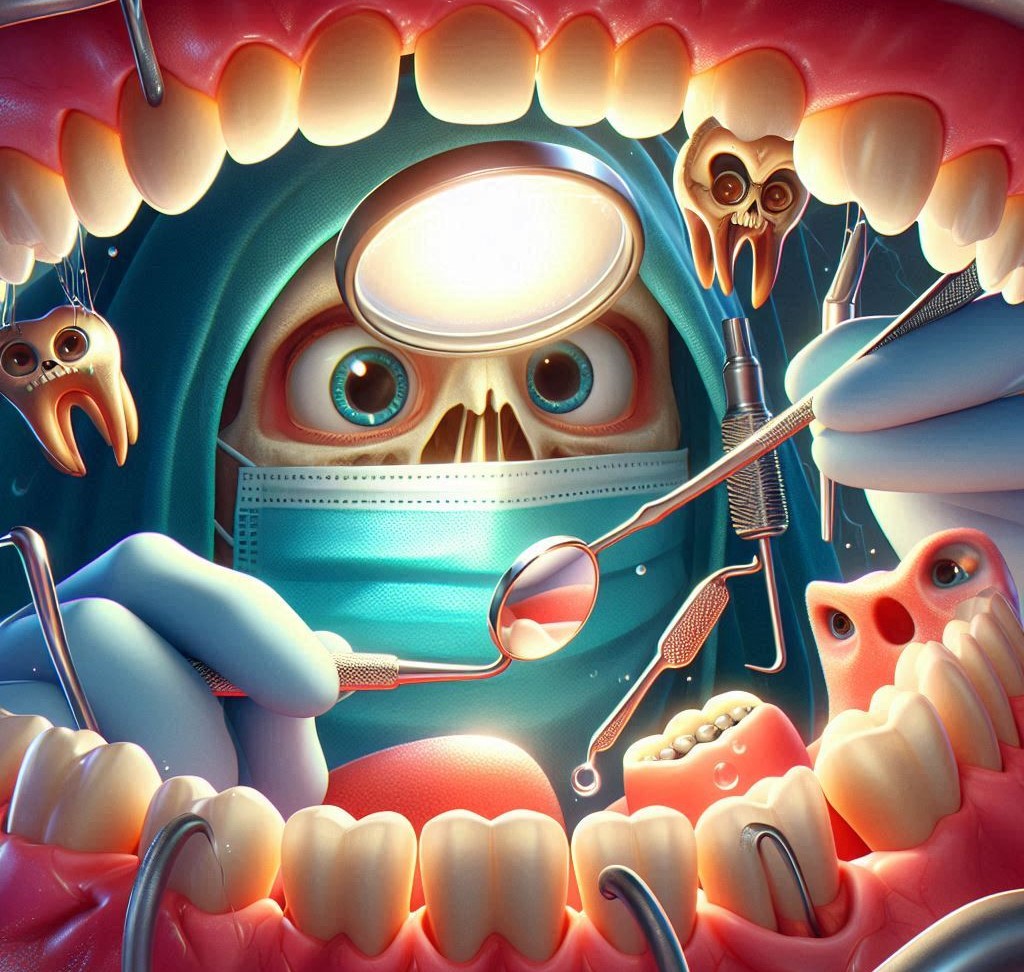Introduction
Smoking is one of the leading causes of preventable death and disease globally. While its detrimental effects on general health, such as cardiovascular disease and lung cancer, are widely acknowledged, the profound impact smoking has on oral health is often underestimated. Many people understand that smoking causes bad breath, but the reality is that smoking leads to a host of oral health problems that go far beyond that—affecting everything from gum health to the risk of oral cancer.
The effects of smoking on the mouth can result in long-term damage to teeth, gums, and the soft tissues of the mouth, making it imperative to understand the full extent of these risks. Smoking affects oral hygiene, contributes to plaque buildup, leads to tooth discoloration, and increases the likelihood of gum disease and tooth loss. Additionally, the use of tobacco products also heightens the risk of developing oral cancers, dry mouth, and complications in healing following dental treatments.
It is clear that smoking creates a hazardous environment in the mouth, but what exactly happens within the oral cavity when someone smokes regularly? In this article, we will explore the direct and indirect consequences smoking has on oral health, detailing both the immediate and long-term effects that extend far beyond the cosmetic issue of bad breath.
Overview of Smoking and Its General Health Impacts
Before diving into the specifics of oral health, it is important to first understand what smoking entails and the general effects it has on the human body. Smoking involves inhaling smoke from burning tobacco, which contains numerous harmful chemicals such as nicotine, carbon monoxide, ammonia, and tar. Each of these chemicals poses specific risks to health.
What Is Smoking?
Cigarettes contain nicotine, an addictive substance that causes dependence and has a profound effect on the body’s cardiovascular and nervous systems. When nicotine is inhaled, it passes through the lungs and into the bloodstream, triggering a release of adrenaline that temporarily increases heart rate and blood pressure. The inhalation of tobacco smoke introduces harmful substances that damage the lungs and respiratory system over time.
General Health Consequences
The health risks associated with smoking extend far beyond the lungs. In addition to its connection to lung cancer and emphysema, smoking has been linked to heart disease, stroke, diabetes, and weakened immune function. Smoking also compromises the body’s ability to fight infections, making individuals more susceptible to illness.
In terms of oral health, smoking is known to impair the body’s ability to fight bacterial infections in the mouth, creating an environment ripe for disease. It’s not just the lungs that are affected—every part of the body suffers from smoking’s toxic effects.
The Impact of Smoking on Oral Hygiene
The connection between smoking and oral hygiene is one of the most significant concerns. Smokers often face increased difficulty in maintaining healthy teeth and gums due to the harmful effects of smoking on oral bacteria and the mouth’s natural defenses.
Cigarette Smoke and Oral Bacteria
When you smoke, the chemicals in tobacco smoke alter the balance of bacteria in the mouth. Research has shown that smokers have a higher concentration of harmful bacteria in their mouths compared to non-smokers. These bacteria thrive in the acidic, dry environment created by tobacco smoke, making it easier for plaque to form on teeth and gums.
Plaque, the sticky, colorless film that builds up on teeth throughout the day, contains harmful bacteria that feed on food particles and sugars. When plaque is left untreated, it can harden into tartar, a mineralized substance that cannot be removed by regular brushing and requires a dentist’s intervention.
Plaque Formation and Tartar Build-Up
Plaque formation is a critical concern for smokers. The toxins in cigarette smoke increase the production of harmful plaque and bacteria in the mouth, which in turn leads to tartar buildup. This accumulation of plaque and tartar around the teeth and gums is one of the leading causes of gum disease, as the bacteria present in the plaque trigger an inflammatory response in the gums.
Over time, plaque can cause gum irritation, leading to the development of gingivitis, an early stage of gum disease characterized by redness, swelling, and bleeding. If left untreated, gingivitis can progress to periodontitis, a more severe form of gum disease that can damage the tissue and bone structures holding the teeth in place.
Increased Risk of Gingivitis and Periodontitis
Nicotine and other chemicals in cigarettes can significantly weaken the immune system, making it harder for the body to fight off infections in the gums. Smoking also reduces blood flow to the gums, depriving them of vital nutrients and oxygen. As a result, smokers are at a much higher risk of developing gum disease than non-smokers. Smokers are not only more likely to develop gingivitis, but they are also more likely to experience it in a more severe form.
The inflammation caused by gum disease can lead to the recession of the gums, which exposes the roots of the teeth, making them more sensitive to hot and cold. Gum disease can also lead to tooth mobility and, eventually, tooth loss if left untreated.
Smoking and Tooth Discoloration
Tooth discoloration is one of the most noticeable and immediate effects of smoking on oral health. The nicotine and tar found in tobacco products have a profound impact on the appearance of teeth.
Yellowing of Teeth
The most obvious form of staining is the yellowing of teeth. As smokers continuously expose their teeth to nicotine and tar, these substances accumulate on the enamel, leading to visible discoloration. The yellow or brown stains caused by smoking are often difficult to remove with regular brushing alone. The longer an individual smokes, the more stubborn the stains become.
The discoloration can make teeth appear unhealthy, affecting an individual’s appearance and self-esteem. Many smokers turn to whitening products or professional treatments in an effort to restore the natural color of their teeth. However, if smoking continues, the discoloration will only return, making it a cycle that is difficult to break.
Long-Term Effects of Staining
Chronic smoking can result in long-term staining that may not be easily reversed, even with the most advanced whitening treatments. While some treatments, such as bleaching, may help lighten stains, they may not completely remove the deep, set-in discoloration caused by years of smoking. The deep stains may require professional dental treatments like veneers, crowns, or bonding to restore a more natural appearance to the teeth.
As the stains continue to build up, they can create grooves and pits in the tooth surface, further complicating the whitening process. This makes the management of tooth discoloration a significant challenge for smokers who continue their habit over time.
The Relationship Between Smoking and Tooth Loss
The Role of Smoking in Tooth Loss
Smoking has a direct impact on the health of the gums and supporting structures of the teeth. The chemicals in cigarette smoke can significantly reduce blood flow to the gums, preventing the tissues from receiving the nutrients they need to stay healthy. Over time, this lack of nourishment can weaken the gums, increasing the risk of gum disease, which is a leading cause of tooth loss.
In addition to contributing to gum disease, smoking also decreases the body’s ability to repair damaged tissue. This means that any damage to the gums or teeth caused by plaque buildup or other factors may not heal as effectively in smokers as in non-smokers. When gum disease progresses to an advanced stage, it can lead to tooth mobility and eventually, tooth loss.
Connection to Periodontal Disease
Smokers are at a significantly higher risk of developing periodontal disease, a more severe form of gum disease that affects the tissues surrounding and supporting the teeth. Periodontal disease is caused by the buildup of plaque and tartar along the gum line, leading to inflammation and infection in the gums. Smoking accelerates the progression of this disease by interfering with the body’s ability to combat infections and repair gum tissue. The damage caused by periodontal disease can eventually result in the loss of teeth and the need for costly dental treatments, such as dental implants or dentures.
Smoking and Oral Cancer
Oral Cancer Risk for Smokers
Smoking is one of the leading causes of oral cancer, a serious condition that can affect the lips, tongue, gums, cheeks, and the roof and floor of the mouth. The carcinogens present in tobacco smoke can damage the DNA of cells in the oral cavity, leading to mutations that may result in the development of cancer. In fact, individuals who smoke are six times more likely to develop oral cancer than non-smokers. The chemicals in tobacco products, including nicotine and tar, can also weaken the body’s natural defense mechanisms, making it easier for cancerous cells to form and spread. Smokers who also consume alcohol are at an even greater risk of developing oral cancer, as alcohol can act as a solvent, allowing the carcinogens in tobacco to penetrate the tissues more easily.
Symptoms of Oral Cancer
Oral cancer can develop silently and may not present obvious symptoms in its early stages. However, as the disease progresses, individuals may notice the following signs:
- Persistent sores or ulcers in the mouth that do not heal.
- Unexplained lumps or thickening in the mouth or throat.
- Pain or difficulty swallowing.
- Persistent bad breath that does not improve with good oral hygiene.
- Numbness or pain in the mouth or jaw.
If these symptoms are present and a person is a smoker, they should seek medical attention immediately to rule out the possibility of oral cancer.
Smoking and Dry Mouth (Xerostomia)
What is Xerostomia?
Xerostomia, commonly known as dry mouth, is a condition characterized by a lack of sufficient saliva in the mouth. Saliva plays a crucial role in oral health by helping to wash away food particles, neutralizing acids, and preventing infection. When saliva production decreases, the mouth becomes dry, making it more difficult to speak, swallow, or even taste food. Xerostomia can lead to various oral health complications, such as an increased risk of cavities, gum disease, and a persistent dry or sticky feeling in the mouth.
How Smoking Contributes to Dry Mouth
Nicotine and other chemicals in tobacco products can reduce the flow of saliva, leading to dry mouth. Smoking causes the salivary glands to become less efficient in producing saliva, leaving the mouth more susceptible to bacteria and plaque buildup. This increased bacterial growth further contributes to bad breath and the development of cavities. Additionally, the dry mouth condition can cause discomfort while eating, speaking, or swallowing.
The reduced production of saliva in smokers is compounded by the fact that the chemicals found in tobacco products (such as nicotine) can alter the function of the salivary glands, making them less effective in responding to stimuli that would normally trigger salivation. Smokers also experience a higher prevalence of oral infections, such as candidiasis (oral thrush), due to the lack of natural oral moisture.
Consequences of Dry Mouth on Oral Health
Dry mouth can have severe consequences for oral health. In the absence of sufficient saliva, harmful bacteria and food particles remain trapped in the mouth for longer periods, allowing them to cause damage to the teeth and gums. This leads to a higher risk of plaque formation, which can ultimately result in cavities, gingivitis, and periodontitis.
In addition, smokers with dry mouth are more likely to develop ulcers, sores, and infections in the mouth, further complicating their oral health situation. Dry mouth can also affect taste sensation, making food less enjoyable and contributing to nutritional deficiencies over time. A major consequence of xerostomia is the increase in plaque buildup. Saliva naturally helps to wash away plaque, which is why people with dry mouth tend to develop more plaque, leading to more aggressive forms of tooth decay and gum disease. The lack of saliva also increases the risk of gingival recession, where the gums pull away from the teeth, exposing the roots and contributing to tooth sensitivity.
Smoking’s Effect on Healing After Oral Procedures
Post-Surgical Healing and Smoking
Smoking has a detrimental effect on the body’s healing process after dental procedures. Whether it’s after a tooth extraction, gum surgery, or dental implants, smoking impairs the blood flow to the affected area, which in turn delays the healing process. Smoking constricts blood vessels and reduces oxygen levels in the blood, making it more difficult for tissues to regenerate after surgery.
In the case of gum surgery or tooth extraction, smoking slows down the regeneration of gum tissues and increases the likelihood of complications such as infection. For instance, smokers are more prone to developing an infection in the socket after a tooth is extracted, which can lead to a condition known as “dry socket.” This painful condition occurs when the blood clot that forms in the empty socket after a tooth extraction is dislodged or dissolves prematurely, exposing the underlying bone and nerves.
Increased Risk of Dry Socket
The risk of dry socket is significantly higher in smokers. This is because the act of sucking on a cigarette creates pressure in the mouth that can disturb the blood clot in the extraction site. Additionally, the toxins in cigarette smoke can interfere with the healing process and increase the risk of infection. Dry socket is extremely painful and can delay the recovery process, often requiring additional treatment and care.
Given the negative impact that smoking has on post-surgical healing, it is strongly recommended that individuals refrain from smoking for at least 48 hours before and after undergoing dental procedures. Following this advice can minimize the risk of complications and contribute to a faster recovery.
Smokeless Tobacco and Oral Health
What is Smokeless Tobacco?
Smokeless tobacco products, including chewing tobacco and snuff, are often considered safer alternatives to smoking cigarettes. However, this is a misconception, as smokeless tobacco products still contain nicotine and harmful chemicals that pose significant risks to oral health. Smokeless tobacco is used by placing it between the cheek and gum or in the lip, allowing nicotine to be absorbed through the oral mucosa.
The Risks of Smokeless Tobacco on Oral Health
Smokeless tobacco is not a harmless alternative to smoking. Just like cigarettes, smokeless tobacco contains nicotine, which constricts blood vessels and reduces blood flow to the gums. This leads to a condition known as gum recession, where the gums pull back from the teeth, exposing the roots and making the teeth more sensitive.
Chewing tobacco is also associated with an increased risk of tooth decay, as the sugar content in many smokeless tobacco products can contribute to the buildup of plaque and tartar. The constant exposure to these sugars and chemicals can result in cavities and weakened enamel.
Nicotine and Gum Recession
One of the most significant risks of smokeless tobacco is its contribution to gum recession. The chemicals in smokeless tobacco irritate the gum tissues and reduce blood circulation, which in turn causes the gums to shrink away from the teeth. This exposes the tooth roots, which are more susceptible to decay and sensitivity. Over time, the loss of gum tissue can lead to the loosening of teeth, further increasing the risk of tooth loss.
Furthermore, the use of smokeless tobacco can lead to the development of “leukoplakia,” a condition where white patches form in the mouth, often on the gums, inner cheeks, or tongue. Leukoplakia is considered a precursor to oral cancer and should be taken seriously by anyone using smokeless tobacco.
The Link Between Smoking and Bad Breath (Halitosis)
What Causes Bad Breath in Smokers?
Bad breath, or halitosis, is one of the most immediate and noticeable side effects of smoking. Smoking causes bad breath in a number of ways. The most obvious factor is the smell of tobacco itself, which lingers in the mouth and on the breath long after the cigarette is extinguished. The smoke that is inhaled and exhaled carries a variety of chemicals, including ammonia and acetone, which can leave a lingering, unpleasant odor.
Chronic Bad Breath and Its Impact on Social Interactions
For smokers, bad breath is often chronic and can be difficult to mask with mouthwash or chewing gum. The persistent odor can affect social interactions, leading to embarrassment and a lack of confidence in personal and professional settings. Smokers may find themselves self-conscious about their breath, which can further impact their quality of life.
Bad breath is a direct result of the drying effect smoking has on the mouth. The lack of moisture in the mouth prevents the natural cleansing process that saliva provides. Without enough saliva, food particles and bacteria accumulate in the mouth, contributing to bad breath.
The Benefits of Quitting Smoking for Oral Health
Improvement in Gum Health
Quitting smoking can significantly improve gum health. Within days of quitting, blood circulation to the gums improves, which allows them to heal and regenerate. Smokers who quit are less likely to develop gum disease and are more likely to experience a reduction in gum inflammation.
Reversal of Staining and Tooth Discoloration
While the discoloration caused by years of smoking may not be completely reversible, quitting smoking can halt the progression of staining. Over time, the enamel may naturally whiten, and the need for expensive whitening treatments may be minimized. Additionally, smokers who quit are less likely to develop new stains, giving their teeth a better chance of remaining healthy.
Reduced Risk of Oral Cancer
One of the most significant benefits of quitting smoking is the reduced risk of oral cancer. The risk of developing oral cancer decreases significantly after quitting, as the body begins to repair itself and the carcinogens in tobacco no longer damage oral tissues. Smokers who quit can drastically reduce their chances of developing oral cancer, though they should continue regular oral cancer screenings with their dentist.
Improved Saliva Production and Healing
After quitting smoking, the production of saliva returns to normal levels, reducing the risk of dry mouth and improving overall oral health. The mouth is better able to fight off bacteria, neutralize acids, and prevent the buildup of plaque. Furthermore, the body’s ability to heal after dental procedures improves, allowing for faster recovery and reduced risk of complications.
Conclusion
In conclusion, the effects of smoking on oral health are far-reaching and often devastating. Smoking damages almost every aspect of oral hygiene, from the gums to the teeth to the soft tissues of the mouth. Smokers face an increased risk of gum disease, tooth loss, tooth discoloration, dry mouth, oral cancer, and other serious health issues. Moreover, the cosmetic consequences of smoking—such as bad breath and stained teeth—can affect one’s confidence and quality of life.
However, the good news is that quitting smoking can have immediate and long-term benefits for oral health. Within days of quitting, blood flow to the gums improves, reducing the risk of gum disease and improving healing after dental procedures. Quitting smoking also reduces the risk of oral cancer and helps maintain healthier teeth and gums over time.
Ultimately, the most effective way to protect your oral health is to avoid smoking altogether. For those who already smoke, seeking professional help to quit is one of the best steps you can take for your oral and overall health. Regular dental check-ups, good oral hygiene, and a commitment to quitting smoking are key factors in maintaining a healthy, beautiful smile for years to come.
SOURCES
American Dental Association (ADA). 2020. Smoking and oral health. Journal of the American Dental Association, 151(7), 502-508.
Bergstrom, J., Wårdh, I., & Lindhe, J. 2000. Smoking and periodontal disease: A review of the evidence. Journal of Periodontology, 71(10), 1301-1309.
Dommershuijzen, L., Vissink, A., Jansen, L., Kuyvenhoven, J., & Brandt, H. 2013. Smoking and oral health: A comprehensive review. Oral Diseases, 19(2), 193-200.
Hansson, M., Lundgren, D., Bergström, J., & Hansson, E. 2001. Nicotine and periodontal disease: A review of the literature. Journal of Clinical Periodontology, 28(11), 989-997.
Khalil, M., Wang, Q., & Sharma, A. 2020. Oral health risks associated with smoking and smokeless tobacco: An epidemiological review. Journal of Dental Research, 99(2), 141-149.
Lindhe, J., Haffajee, A. D., & Socransky, S. S. 1999. The effects of smoking on periodontal disease: A review of the literature. Journal of Periodontology, 70(7), 736-746.
Michaud, D. S., Fitzpatrick, A. L., & DeStefano, F. 2006. Smoking and the risk of periodontal disease in adults. Journal of the American Dental Association, 137(2), 207-214.
Miranda, M., Migliorati, C. A., & Gonzalez-Carrascosa, R. 2011. The impact of smoking on oral cancer. Oral Oncology, 47(9), 869-874.
Petrie, A., & Steele, L. 2019. Smoking, oral health and its impact on public health. Journal of Public Health Dentistry, 79(1), 39-47.
Rossi, C. P., Matheis, L., Mendes, R., & Thomson, M. 2017. Smoking cessation and improvements in oral health: A review of clinical studies. European Journal of Clinical Dentistry, 8(2), 109-115.
Santos, M. T., Santos, M. M., & Bezerra, A. L. 2008. The relationship between smoking and periodontal disease in adults. Journal of Periodontal Research, 43(5), 533-539.
Schwartz, J. R., Sarkar, D., & Greenwood, C. 2005. The pathogenesis of oral cancer in smokers: A review of molecular mechanisms. Oral Medicine and Pathology, 21(6), 345-352.
Vera, A., Gonzalez, J. M., Vázquez, S. R., & Álvarez, S. F. 2014. Effects of smoking on tooth discoloration and enamel surface. Journal of Clinical Dentistry, 26(3), 55-63.
Wolff, L. F., Götz, H., & Harmer, L. 2007. The relationship between smoking, periodontitis, and tooth loss in adults: A systematic review. Journal of Periodontal Research, 42(3), 333-345.
Zhang, X., Xu, T., & Huang, Y. 2021. Smoking and oral diseases: A review of the consequences on dental and periodontal health. International Journal of Oral Science, 13(1), 49-56.
HISTORY
Current Version
February 5, 2025
Written By:
SUMMIYAH MAHMOOD




